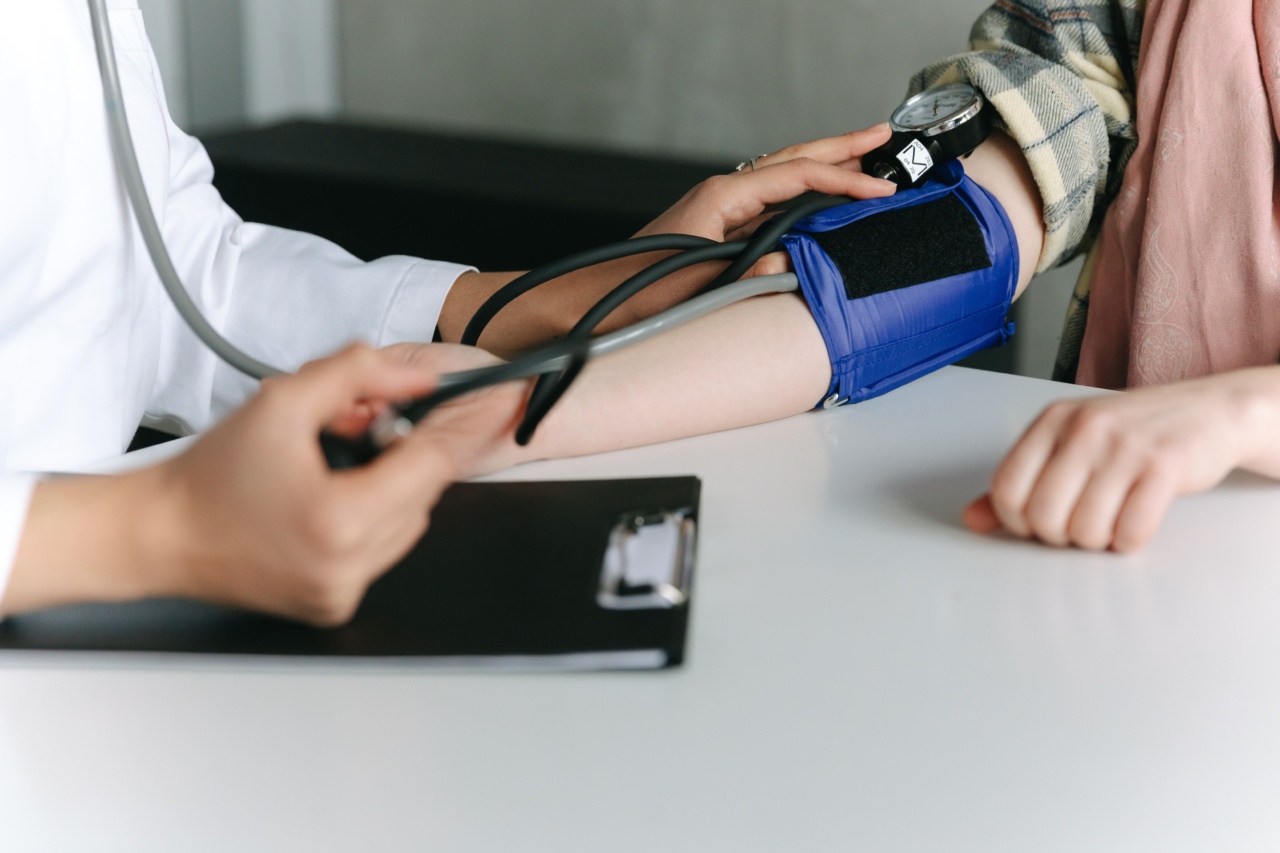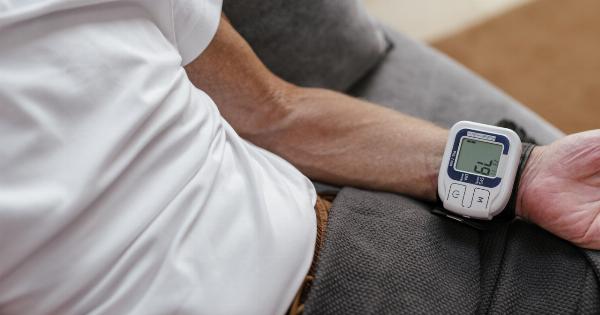Hypertension, also known as high blood pressure, is a common medical condition that affects millions of people worldwide.
It is often referred to as the “silent killer” because it typically has no symptoms but can lead to serious health complications if left untreated. Unfortunately, a significant number of people with hypertension are unaware of their condition, making it crucial to raise awareness and promote regular blood pressure screenings.
This article explores the alarming statistic that three-quarters of individuals with hypertension are undiagnosed, highlighting the importance of early detection and management.
Hypertension: A Growing Health Concern
Hypertension is a chronic medical condition characterized by elevated blood pressure levels. Blood pressure is measured in millimeters of mercury (mmHg) and is presented as two numbers: systolic pressure over diastolic pressure.
The ideal blood pressure reading for adults is generally considered to be around 120/80 mmHg.
However, when blood pressure consistently exceeds 130/90 mmHg, it is classified as hypertension.
This condition puts excessive strain on the heart and blood vessels, increasing the risk of heart disease, stroke, kidney problems, and other serious health complications.
The Prevalence of Undiagnosed Hypertension
Despite the well-established risks associated with high blood pressure, a staggering number of individuals remain undiagnosed. According to recent studies, approximately three-quarters of people with hypertension are unaware of their condition.
This alarming statistic suggests that millions of individuals are living with untreated hypertension and are at a significantly higher risk of developing cardiovascular diseases.
Identifying this large proportion of undiagnosed cases is crucial to implementing appropriate interventions and reducing the burden of hypertension-related health complications.
The Silent Nature of Hypertension
One of the reasons behind the high rate of undiagnosed hypertension is the silent nature of the condition.
Unlike many other diseases, hypertension does not typically cause noticeable symptoms until it reaches a severe and potentially life-threatening stage.
Often, individuals feel perfectly fine even when their blood pressure readings are dangerously high. This lack of symptoms creates a false sense of well-being, leading to a delay in seeking medical attention and diagnosis.
Regular blood pressure screenings are essential in detecting hypertension before it progresses and causes irreversible damage.
Barriers to Diagnosis
There are various factors contributing to the underdiagnosis of hypertension. One primary barrier is the lack of routine blood pressure measurements during medical check-ups.
Many individuals only visit healthcare providers when they experience symptoms or have other pressing health concerns, neglecting the importance of preventive screenings.
In addition, limited access to healthcare, particularly in underserved populations, significantly impedes the diagnosis and management of hypertension.
Socioeconomic factors, such as poverty and lack of insurance coverage, often prevent individuals from seeking regular medical care, resulting in undetected and untreated hypertension.
Moreover, the absence of public awareness campaigns and educational initiatives focusing on blood pressure screenings leaves a significant gap in hypertension diagnosis efforts.
By promoting the importance of routine screenings, healthcare professionals can contribute to increased awareness and early detection.
The Role of Primary Care Providers
Primary care providers play a vital role in identifying undiagnosed hypertension and managing the condition effectively. Regular check-ups, including blood pressure measurements, are essential for early detection and timely intervention.
Primary care providers are in a unique position to educate their patients about the risks associated with hypertension and the importance of blood pressure management.
Empowering individuals to take control of their health and addressing any barriers to diagnosis can lead to improved patient outcomes and reduced hypertension-related complications.
Implementing Hypertension Screening Programs
In order to address the issue of undiagnosed hypertension on a larger scale, it is crucial to implement hypertension screening programs.
These programs can be integrated into community health centers, workplaces, schools, and other public settings to reach individuals who may not regularly seek medical care.
Hypertension screening programs can involve providing free or low-cost blood pressure checks, raising awareness about the importance of regular screenings, and offering information on lifestyle modifications to prevent or manage hypertension.
These initiatives can help identify individuals with undiagnosed hypertension and connect them with appropriate healthcare resources.
Empowering Individuals with Knowledge
Education is key to combating undiagnosed hypertension. Individuals need to be informed about the risks associated with high blood pressure, the importance of routine screenings, and lifestyle modifications that can prevent or manage hypertension.
Public health campaigns aimed at increasing awareness about hypertension can include various mediums such as television advertisements, social media platforms, and community seminars.
By providing accessible and accurate information, individuals can make informed decisions about their health and seek medical attention when necessary.
Collaboration with Healthcare Providers and Community Organizations
Addressing the issue of undiagnosed hypertension requires collaboration between healthcare providers, community organizations, and other stakeholders.
By working together, these entities can develop targeted screening programs, expand access to healthcare services, and provide support for individuals with hypertension.
Healthcare providers can partner with community organizations to host blood pressure screening events, support educational initiatives, and promote healthy lifestyle choices.
This collaborative approach helps create a supportive environment that encourages individuals to take control of their health and seek necessary medical care.
The Importance of Regular Blood Pressure Screenings
To combat the alarming rate of undiagnosed hypertension, regular blood pressure screenings must become a priority for individuals, healthcare providers, and communities.
These screenings can be performed at various locations, including primary care clinics, pharmacies, and community health centers.
By incorporating routine blood pressure measurements into regular medical check-ups and making screenings easily accessible, healthcare providers can improve hypertension diagnosis rates and facilitate early intervention.
The Role of Telemedicine in Hypertension Diagnosis
In recent years, telemedicine has emerged as a valuable tool in healthcare delivery. This technology allows individuals to consult with healthcare providers remotely, eliminating geographical barriers and increasing access to medical care.
Telemedicine platforms can be utilized to perform virtual blood pressure screenings and provide real-time data to healthcare professionals, enhancing the diagnosis and monitoring of hypertension.
The convenience and efficiency of telemedicine make it an effective strategy for reaching individuals who may have limited access to traditional healthcare settings.
Mitigating the Consequences of Undiagnosed Hypertension
Undiagnosed hypertension poses significant risks to individuals and can lead to severe health complications. It is crucial to address this issue to prevent avoidable morbidity and mortality.
Implementing comprehensive hypertension awareness campaigns, expanding access to healthcare services, and integrating routine blood pressure measurements into regular medical check-ups are essential steps in mitigating the consequences of undiagnosed hypertension.
Early intervention through diagnosis and appropriate management can significantly reduce the risk of cardiovascular diseases and improve overall health outcomes.
Conclusion
The fact that three-quarters of individuals with hypertension are undiagnosed highlights the urgent need for increased awareness, routine screenings, and improved access to healthcare services.
Through collaboration between healthcare providers, community organizations, and public health initiatives, strides can be made in identifying and managing hypertension.
An emphasis on education, regular check-ups, and the integration of telemedicine can contribute to early detection and intervention.
By addressing barriers to diagnosis and implementing effective screening programs, the number of undiagnosed hypertension cases can be reduced, ultimately leading to improved public health outcomes.





























